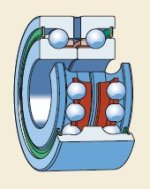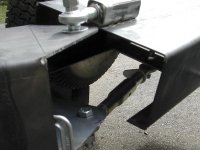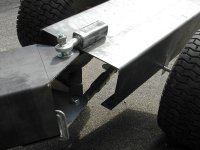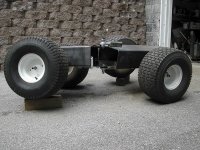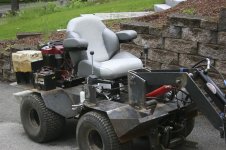a bushing should last a long time,
the front axle of most farm tractors just have a bushing and maybe a thrush washer, and grease Zerk,
John Deere in there big 4 wheel drive tractors used bushings in there articulated hinges, and a grease zerk, to lubricate it,
My old 6600 JD combine on the rear Axel just has a bushing and a Zerk (yes I did replace the bushing when i first got it as the original owner apparent did not know what a Zerk was for, or how to use a grease gun, but I have had the machine for 30+ years, and it carries when full and additional 8000+ pounds when the bin is full plus the machine and that bushing on the rear Axel is doing just fine, I am reasonably sure your stress and loads will be less than the rear axle of that combine or of a big horse power 4 wheel drive articulated tractor,
and if you extend the points on the front hing, It would take a lot of the stress off the unit,
